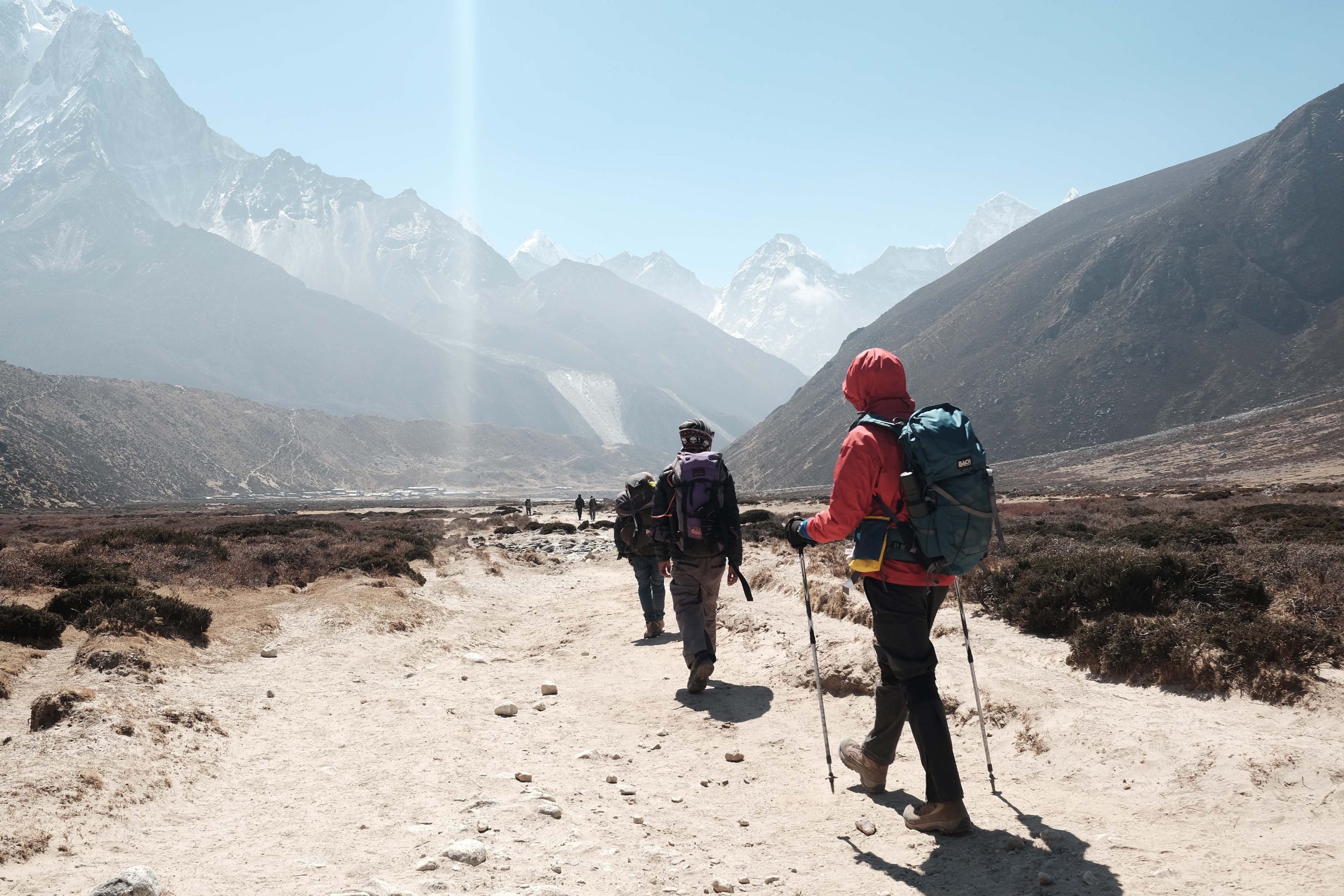How Our Core Organizational Values Elevate Our Team
With a name like 15Five, our partners are often curious about the story behind it. And we understand. It’s not exactly an intuitive signature for a software company to have, right?
“15Five” is based off of a practice invented by Esprit founder, Doug Tompkins, and made famous by Yvon Chouinard, founder of outdoor brand, Patagonia. An avid mountain climber and sportsman, Chouinard would spend much of his time adventuring away from the office. This led to implementing “5-15 reports” for more efficient communications with his team while he was off the grid.
To this day, Patagonia employees take 15 minutes to write reports for their managers, who then take five minutes to read and create similar reports for their own managers, and so on. Such leeway allows everyone to spend more time on execution without sacrificing engagement.
15Five is rooted in the idea that a culture of strong communication and trust can lead to a more committed and productive workforce. This is best articulated through our core values, which serve as a cultural compass for our entire team. Each of our 10 organizational values ladders back up to the type of experience we create for our employees and the level of service we provide for our customers.
As the 2019 Mount Everest climbing season winds down, we’ve decided to bring those values full circle by tying them back to their heritage.
1) Find the Leverage
Everest. Its name alone inspires awe. Reaching the 29,029-foot summit under one’s own power is considered an incredible accomplishment. Each year, hundreds of hopeful climbers undergo unimaginable physical and psychological challenges for the honor of entering the very exclusive club.
But, at the end of the day, Everest is as much a business as it is a trophy. While most of the newsworthy action takes place over the course of two to three months, the behind-the-scenes work for dozens of professional guiding services begins as far out as a year or more. Their teams manage various areas that are crucial for attracting clients and planning complex mountaineering trips, so no day goes by wasted.
Like these services, our team is constantly trying to hit milestones and achieve growth in a highly-competitive landscape. Therefore, we concentrate our limited time and energy on the right leverage points by being creative, resourceful, and efficient. We capitalize on the areas where we excel rather than trying to be all things to all people, thereby creating true separation from the pack.
[Tweet “Instead of trying to be all things to all people, capitalize on the areas where you excel.”]
2) Cultivate Health and Vitality
Less oxygen and air pressure at extreme elevations have all kinds of debilitating effects on the human body. In fact, above 19,000 feet it literally begins to decay. Even using supplemental oxygen near the top, climbers are essentially racing against the clock to get up and down as quickly as possible.
So, to say one must be “in shape” for Everest is a woeful understatement. Good outfitters give their people and their customers the best possible shot at success starting with customized exercise programs well before they ever arrive. Once on the mountain, everything from meals to acclimatization schedules are carefully planned to keep the entire team in peak condition.
It’s really no different back at sea level. Strong health is just as essential to workplace happiness and focus as it is to success in the Himalayas. We work hard to cultivate wellness into our organizational values, not just to enhance our people’s production, but to help energize and center their lives in and out of the office. This focus is on the whole person, not just the physical aspect, but on one’s emotional needs as well.
3) Grant Trust and Be Transparent
Without putting too fine a point on it, Everest is a clear and present danger for even the most experienced peak baggers. This makes trust absolutely paramount between expedition leadership and everyone they’re responsible for. Senior guides need to be open and honest about the decisions they’re making on the mountain so that the junior guides, camp staff, and most importantly the clients know their best interests are at heart.
Expedition leaders understand their words and actions boost confidence, shape relationships, and build important team camaraderie. This is critical, particularly for when things go sideways—and they will. When faced with serious or even life-and-death situations, guides who have built this bond can act decisively knowing their team will trust in their judgment and follow their lead.
Whether your ultimate goal is a summit or sales growth, we believe trust is the foundation upon which success is built. Our leadership understands that teams thrive when healthy, authentic relationships characterize employee interaction.
Trust and transparency create a supportive atmosphere and allow us to more easily identify and resolve issues together. When you can rely on the person next to you to match your commitment and intentions, it’s amazing what can happen.
4) Always Be Learning and Growing
Veteran guides who think they have it all figured out just because they’ve reached the top a few times may as well be waving a giant red flag. Mountains like Everest are living beings, constantly changing and presenting new challenges.
For instance, grinding glaciers can change paths in the middle of an expedition, and violent earthquakes can permanently alter established routes. Strong guides learn from these experiences and use them as teaching moments for up-and-coming team members seeking to hone their problem-solving, safety, and leadership abilities.
Likewise, employee growth and development is an essential principle regardless of whatever “mountain” your business is climbing. We believe this organizational value is key to reaching your highest potential as an employee and as a person.
That’s why we actively foster a learning environment and make this mindset a way of life. Businesses that commit to expanding the skill sets and acumen of their people find that the cultural and financial benefits will justify the investment many times over.
[CTA “To help your employees find a personalized path for growth and development, try 15Five to facilitate more meaningful 1-on-1s.”]
5) Keep Things Simple
Simplicity is a virtue that begins at the top of the org chart. Expedition leaders must ensure all staff members understand what they need to do and when, leaving no room for ambiguity or miscommunication. This includes clearly outlining roles and then simplifying each objective to make it clear and actionable. It also translates to areas like customer service.
Streamlining a clients’ priorities such as government paperwork, gear lists, and training programs enhances their overall experience from beginning to end. Consequently, it also increases the outfitter’s chances of turning them into brand advocates.
In business, too, we view simplification as a gateway to personal growth and company-wide progress. Burying teams in complicated people ops processes does nobody any good. It’s frustrating for employees, creates more work for managers, and prevents everyone from spending time on tasks that really matter.
Alternatively, if processes are easy to follow, simplification and production will go hand-in-hand to build positive outcomes.
6) Embrace Freedom and Flexibility
As we’ve established, climbing Everest isn’t simply a matter of throwing up a few tents and shouldering a backpack each day. Unexpected issues are guaranteed in an unpredictable environment no matter how well things were planned or simplified ahead of time. While leadership focuses on the long-term goals, the rest of the team must be empowered to troubleshoot inevitable disruptions and remain agile.
Take the actual climb itself as an example. Changing terrain, fleeting weather windows, and climbers’ physical conditions all require flexible approaches to executing plans. At times, spur-of-the-moment decisions are necessary by different members of the team. Strong leadership prepares them well for these scenarios and trusts that they’ll act in everyone’s best interest.
On or off mountains, micromanagement can be counterproductive and frustrating. We offer guard rails through our core organizational values rather than enforcing rigid rules to encourage our team of committed, self-directed people.
This doesn’t mean you should shut down communication entirely. Tools like weekly check-ins and 1-on-1s facilitate effective employee engagement without impeding how, when, or where they work.
7) Take Responsibility
Lead guides are the most visible and talked about members of any climb. Rightfully so, considering responsibility for getting everyone up and down safely is ultimately on their shoulders. But, they’re just the tip of the expedition iceberg. Without the unsung work of those behind the scenes, no matter how experienced a service’s guides are, they can’t do it all themselves.
A capable Everest expedition hinges on a team that can competently divide and conquer. Each person must play to his or her strengths and take ownership of a particular piece of the larger puzzle.
Successfully summitting in the business world also involves giving all members of the team a degree of ownership and then holding them accountable for it. At 15Five, we actively nurture a culture of accountability, personal growth, and integrity which increases our people’s sense of fulfillment and trust in one another. We then make sure to celebrate the wins that come as a result.
[Tweet “Fostering a culture of accountability increases people’s sense of fulfillment.”]
8) Maximize Our Zone of Genius
Part of leading diverse groups of people from all walks of life, whether climbing a mountain or building a company, is sharing the overall vision then letting go and allowing everyone to do what they do best. Shrewd guides are transparent with their staff, give them a seat at the table, and respect their input into matters that directly involve their oversight.
That way, leadership isn’t bogged down in the details, and team members appreciate meaningfully contributing to the tremendous task of putting others on the top of the world.
This zone of genius is why we make such an effort to find the right talent in the first place. To us, what really makes a successful team is the ability to leverage the unique skills and insights each person brings to it. Identifying individual traits allows us to properly align roles as well as uncover other areas for development to maximize collective performance.
9) Commit to Customer Success and Delight
Customer service directly impacts brand differentiation and business development. When you’re dealing in life and death, people want to feel as comfortable as possible that a service will return them to their families and friends in one piece. Whether it’s word-of-mouth or company reviews, it all factors into an outfitter’s reputation and its prospects’ decision making.
So, getting every single employee to fully buy in is essential. From pre-climb administrative support to the attitudes exhibited by camp staff, everyone has a hand in building a working culture that exceeds expectations.
This is central to our philosophy and organizational values. Ongoing dedication to customer success is what gets our team out of bed every day. We strive to delight our customers with an industry-leading product and matching service. This increases the likelihood of our partners becoming brand ambassadors on our behalf, leading to positive referrals and allowing us to further our mission.
10) Dare to Dream
Conquering Mount Everest is one of the most aspirational undertakings of all time. Edmund Hillary proved it possible when he became the first to reach the top in 1953. Since then, over 5,300 brave souls have successfully followed in his boot-steps.
Today, dreamers continually challenge themselves with ever greater goals: finding new routes to the top, setting up-and-back speed records, overcoming disabilities to summit, inspiring others, and the list goes on.
We encourage our people to do the same thing in their own way. Short-term objectives give us what we need to build our business and fulfill the promises we make to our partners. Long-term vision allows us to innovate and expand our idea of what’s possible. At work and at home, it’s all about dreaming big, putting a plan in place, and ultimately becoming our best selves.
What Inspires Your Organizational Values?
Everest guiding naturally represents the more extreme end of the business world. These climbs involve a monumental physical toll and degree of danger along with a remarkable depth of planning and attention to detail.
Maintaining a positive work culture and outstanding customer service is mandatory in an industry where the chances of success are less than a coin flip. Only through adhering to a strong, carefully-curated set of values can expedition leaders ensure that everyone—employees and customers alike—has a safe and fulfilling journey regardless of outcome.
Of course, every business is different. While our own organizational values and the underlying concept behind our product can be traced back to an outdoors-inspired system, we’ve tailored them to the modern nuances and needs of the people ops marketplace. To be effective, your values should embody what it is that your people need to best meet your clients’ needs, no matter how adventurous they may be!

David Hassell is cofounder and CEO of 15Five, performance management software that includes continuous feedback, OKRs, peer recognition, 1-on-1s, and 360° reviews. David speaks and writes about leadership and was named “The Most Connected Man You Don’t Know in Silicon Valley” by Forbes Magazine. Follow him @dhassell.
Photo by Ted Bryan Yu on Unsplash




